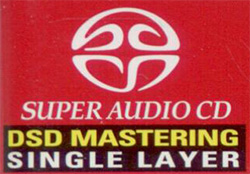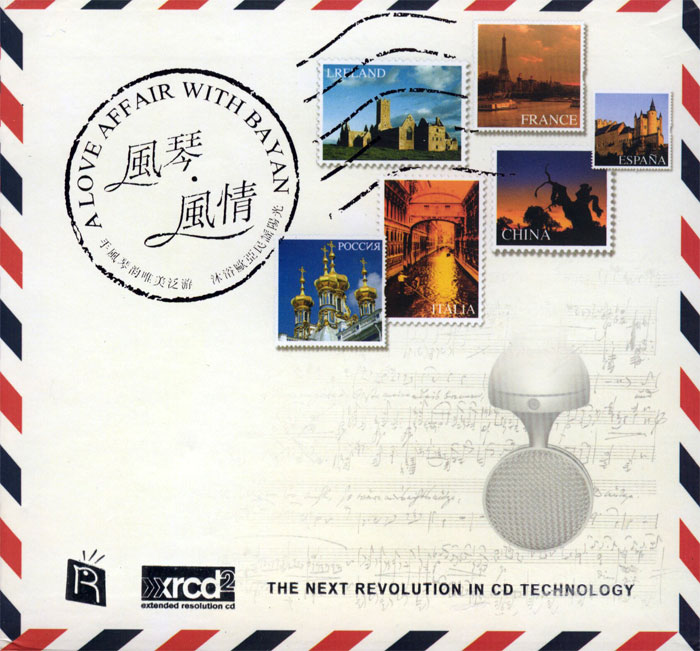Logowanie
Dlaczego wszystkjie inne nie brzmią tak jak te?
SpeakersCorner - OSTATNIE!!!!
RAVEL, DEBUSSY, Paul Paray, Detroit Symphony Orchestra
Prelude a l'Apres-midi d'un faune / Petite Suite / Valses nobles et sentimentales / Le Tombeau de Couperin
Samozapłon gwarantowany - Himalaje sztuki audiofilskiej
PROKOFIEV, Stanislaw Skrowaczewski, Minneapolis Symphony Orchestra
Romeo and Juliet
Stanisław Skrowaczewski,
✟ 22-02-2017
BARTOK, Antal Dorati, Philharmonia Hungarica
Dance Suite / Two Portraits / Two Excerpts From 'Mikrokosmos'
Samozapłon gwarantowany - Himalaje sztuki audiofilskiej
ENESCU, LISZT, Antal Dorati, The London Symphony Orchestra
Two Roumanian Rhapsodies / Hungarian Rhapsody Nos. 2 & 3
Samozapłon gwarantowany - Himalaje sztuki audiofilskiej
Winylowy niezbędnik
ClearAudio
Cartridge Alignment Gauge - uniwersalny przyrząd do ustawiania geometrii wkładki i ramienia
Jedyny na rynku, tak wszechstronny i właściwy do każdego typu gramofonu!
ClearAudio
Harmo-nicer - nie tylko mata gramofonowa
Najlepsze rozwiązania leżą tuż obok
IDEALNA MATA ANTYPOŚLIZGOWA I ANTYWIBRACYJNA.
Wzorcowe
Carmen Gomes
Celebrating the art and spirit of music - vol. 5 - Reference Songs
- CHCECIE TO WIERZCIE, CHCECIE - NIE WIERZCIE, ALE TO NIE JEST ZŁUDZENIE!!!
Petra Rosa, Eddie C.
Celebrating the art and spirit of music - vol. 3 - Pure
warm sophisticated voice...
SAMPLER - STS DIGITAL, Gregor Hamilton
Celebrating the art and spirit of music - vol. 2 - Love songs from Gregor Hamilton
...jak opanować serca bicie?...
SAMPLER - STS DIGITAL
Celebrating the art and spirit of music - vol. 1 - Leonardo Amuedo
Największy romans sopranu z głębokim basem... wiosennym
Lils Mackintosh
Celebrating the art and spirit of music - vol. 4 - A Tribute to Billie Holiday
Uczennica godna swej Mistrzyni
BEETHOVEN, NDR Sinfonie-Orchester, Gunter Wand
9 Sinfonien
Mastering: ESOTERIC - NUMER JEDEN W ŚWIECIE AUDIOFILII I MELOMANÓW - SACD ONE LAYER
Pierwsza japońska edycja tych nagrań w masteringu ESOTERIC ukazała się w roku 2012. Uznano i okrzyczano ją wydarzeniem na miarę dziesięciolecia.
Tak subtelna, laparoskopowa wręcz możliwość studiowania każdego dźwięku - zdarzyła się w nowożytnym audioflizmie bodaj pierwszy raz.
Po siedmiu latach - Sony wznawia dziewięć symfonii Beethovena w jeszcze bardziej wyrafinowanej postaci - jako płyty jednowarstwowe, SACD

>> Płyty SACD Single Layer - do odtworzenia wyłącznie w czytnikach SACD. Wydanie o szczególnych walorach audiofilskich. Pełny obraz zapisu analogowego. Technologia Super Magnum Sound - znakomicie rewitalizuje dźwięk oryginalny, zdejmując zeń wszelkie naleciałości czasu i technologii magnetofonowej.<<<
Reissue featuring SACD (single later / stereo) and DSD mastering, derived from the original 2 track analog master.
Bezüglich der Sinfonien Ludwig van Beethovens hat Günter Wand Interpretationsgeschichte geschrieben: Die Neunte führte er in Köln mit seinem Gürzenich-Orchester erstmals 1955 in Beethovens originaler Version auf; davor war stets eine "aufgepeppte" Version mit Instrumentationszusätzen von Gustav Mahler und Richard Wagner gespielt worden. Heutzutage ist es schlechterdings nicht mehr vorstellbar, etwas anderes als das Original zu musizieren. Aber selbst 1963 noch wiederholte sich für Wand die Kölner Geschichte in Hamburg: Hier hatten die Orchestermusiker sich von der Bearbeitung ihres geliebten Wilhelm Furtwängler zu verabschieden, was zu nicht unerheblichen Auseinandersetzungen führte. Damals dachte natürlich noch niemand daran, dass Wand fast 20 Jahre später der Chefdirigent dieses Ensembles werden würde und dass eine brillante Einspielung aller Beethovensinfonien (aufgenommen in den Jahren 1985 bis 1988 im Studio) eine seiner größten Hamburger Leistungen werden sollte.
Der Wille des Komponisten steht für Günter Wand immer an erster Stelle; nicht "interpretieren" will er ein Werk, sondern möglichst das zum Vorschein bringen, was der jeweilige Komponist intendiert hat. Trotz dieser kompromisslosen Werktreue ist Wand selbstverständlich kein Anhänger der "Historischen Aufführungspraxis": Scharfe Kontraste sowie andere Ecken und Kanten, die Dirigenten wie John Eliot Gardiner oder Roger Norrington gerade auch in Beethovens Werken zum Vorschein gebracht haben, wird man in Günter Wands Einspielungen nicht finden. Andererseits jedoch fasziniert er durch einen schlanken, flexiblen Klang, der trotz einer eher "romantischen" Grundstimmung große Durchsichtigkeit ermöglicht und Liebe zum Detail erkennen lässt. In dieser Hinsicht sind die rein instrumentalen Sinfonien Nummer 1 bis 8 sowie die drei ersten Sätze der Neunten durchweg eine reine Freude; im Finalsatz der Letzteren hätte man sich vielleicht eine vibratoärmere Sopranistin als Edith Wiens sowie einen Chor von ähnlich jugendlich-frischer Qualität wie der Stuttgarter Kammerchor oder der Monteverdi Choir gewünscht. Diese vokalen Kritikpunkte schmälern jedoch kaum den Wert von Günter Wands vorbildlicher dirigentischer Leistung; in gewohnter Weise tritt er selbst ganz hinter den Komponisten zurück und erweist sich gerade daher als einer der ganz großen Orchesterleiter unserer Tage. --Michael Wersin
(Amazon.de)
*** ***
Artistic Quality 10/10 Sound Quality
Since his death, Günter Wand’s reputation seems to have declined from being the Grand Old Man of the German classics to, well, yesterday’s news. This is a terrible shame. He was a stellar conductor, and this Beethoven cycle remains one of the reference versions. A reader wrote to us recently asking why it was that we haven’t reviewed it, although it always gets listed as a “reference recording” in articles on other Beethoven symphony editions. The reason is simply that it was issued originally in 1989, a decade before we existed, and has only reappeared once since, and then it was not released domestically. Indeed, this latest incarnation sort of crept back into the catalog unannounced.
Wand recorded a few of the symphonies again after this set was released, but unlike Bruckner, or Brahms, this remains his only complete Beethoven cycle to achieve international distribution, a signal achievement that happily avoids the confusion caused by his multiple Bruckner Eighths and Ninths or triplicated Schubert “Great” Symphonies. This is one of the most consistent of all modern Beethoven editions, capped by a Ninth that stands among the select performances of that work on disc. Wand achieved superlative results the old fashioned way: by demanding extensive rehearsals before performances and recordings.
You may well ask what he accomplished with the extra time, given that the music poses no special technical problems to modern players. Wand used to describe himself as “an old conductor of the new school.” In other words, he was a disciple of Toscanini, with that conductor’s belief in fidelity–never slavish–to the text, and a firm rhythmic underpinning coupled to relatively strict tempos. There are other ways to play Beethoven, of course, but as we all know this one works particularly well when the conductor achieves the ensemble discipline of the high order on display here. Let’s consider a few examples.
Many conductors like to insert a pregnant pause before the start of the coda in the Ninth’s first movement. Beethoven did not ask for one, and Wand gets the feeling of “pregnancy” by making a slight ritard and then moving straight on. He then takes special care to clarify the creepy repeated bass line that slowly builds through the string section, balancing it against the principal melody in the oboe. The result has a thrilling inexorability that few other versions match. This attention to what is happening below the melodic surface also pays big dividends in the first movement of the Seventh Symphony, where a moderate tempo combines with unusual rhythmic precision to create an incredibly powerful forward momentum.
As the above suggests, one of the things that makes these performance so special is Wand’s ability to create a truly athletic feeling of movement at any tempo, and in order to do that he has to pay attention not just to tiny details, but also to larger phrases and musical paragraphs. How many listeners hear the end of the scherzo of the Fourth Symphony as a final orchestral crash followed by a coda consisting of a two-note horn crescendo followed once again by the same final chord? But that is not what Beethoven wrote. What he wrote, and what Wand lets us hear, is that the horns play through that non-final, final chord with three more notes, piano, and the two-note crescendo is actually the continuation of their phrase. Listen for yourself. The result has such powerful logic. For once that tiny coda doesn’t sound like a mere appendix, but a delightful joke in which the full orchestra shouts down those misbehaving horns.
These examples characterize the interpretations generally. I don’t have to spend more time describing how Wand integrates these small details into the larger whole–that the Fifth Symphony has all of the grit and grandeur that Beethoven intended; that the funeral march in the “Eroica” is one of the most noble on disc; or that the “Pastoral” captures the music’s earthiness and rusticity with memorable fidelity. This approach also elevates the “lesser” works—Symphonies 1, 2, and 8—in the sense that we hear how full of similarly rewarding detail they are, and thus how naturally they fit into the curve of Beethoven’s musical development.
Exceptionally well recorded, this Beethoven cycle belongs in every serious collection, alongside, or even in preference to, those by Szell, Barenboim, and maybe a couple of others. It’s that special.
-- David Hurwitz, ClassicsToday.com [1/2014]

























